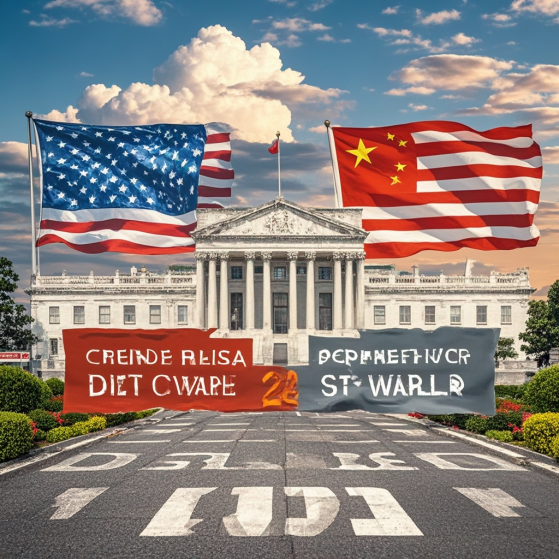U.S.-China Trade War and the American Debt Crisis: Insights from a Historical Perspective
In the current global economic landscape, the U.S.-China trade war and the American debt crisis have become focal points of widespread attention. To deeply understand their impact on both the United States and China, it may be insightful to trace parallels from a similar historical episode.
Looking back to May 1570, Europe was undergoing a major transformation in its political and economic order. Trade among nations was frequent, yet intense competition over interests also prevailed. During this period, trade conflicts and economic hardships between countries bore subtle resemblances to the present-day situation.
Today, since its outbreak, the U.S.-China trade war has had profound effects on both nations and the global economy. From the U.S. perspective, the trade war has impacted certain industries. For instance, in the agricultural sector, American farmers have faced challenges such as unsold produce and declining incomes due to China's retaliatory tariffs on U.S. agricultural goods. Many farmers have had to rely on government subsidies to stay afloat, undoubtedly adding to the fiscal burden of the U.S. government.
In manufacturing, the trade war has disrupted supply chains. To circumvent tariffs, U.S. companies have had to reconfigure their global supply chains, increasing operational costs. Some businesses have even been forced to lay off workers or shut down due to unsustainable cost pressures, negatively affecting the U.S. job market.
Meanwhile, the American debt crisis has exacerbated these challenges. For years, the U.S. has relied on massive borrowing to sustain its economy and government expenditures. As the debt burden continues to grow, the U.S. government faces immense repayment pressures. Any increase in the risk of debt default could trigger turmoil in global financial markets.
For China, while the trade war has posed challenges, it has also accelerated economic restructuring and industrial upgrading. Chinese companies have increased investments in technological innovation, enhancing product value-added and reducing reliance on the U.S. market. At the same time, China has actively expanded into emerging markets such as the Belt and Road Initiative, seeking diversified trade partnerships to mitigate the trade war's impact.
From a historical lens, during Europe’s trade conflicts and economic struggles in 1570, some nations achieved recovery and growth through proactive reforms and exploring new markets, while others declined due to stagnation. Against the backdrop of the current U.S.-China trade war and the American debt crisis, if the U.S. persists with protectionist policies, it may not only fail to resolve its economic woes but could further destabilize the global economy.
China, on the other hand, should continue to uphold reform and opening-up, deepen supply-side structural reforms, and strengthen its economic resilience. By seizing opportunities amid crises—through technological innovation and market expansion—it can achieve sustainable economic development.
The twin issues of the U.S.-China trade war and the American debt crisis are not only pivotal to the economic interests of both nations but also exert far-reaching influence on the global economic order. All stakeholders should draw lessons from history, address challenges with rationality and pragmatism, and jointly promote the healthy development of the global economy.
